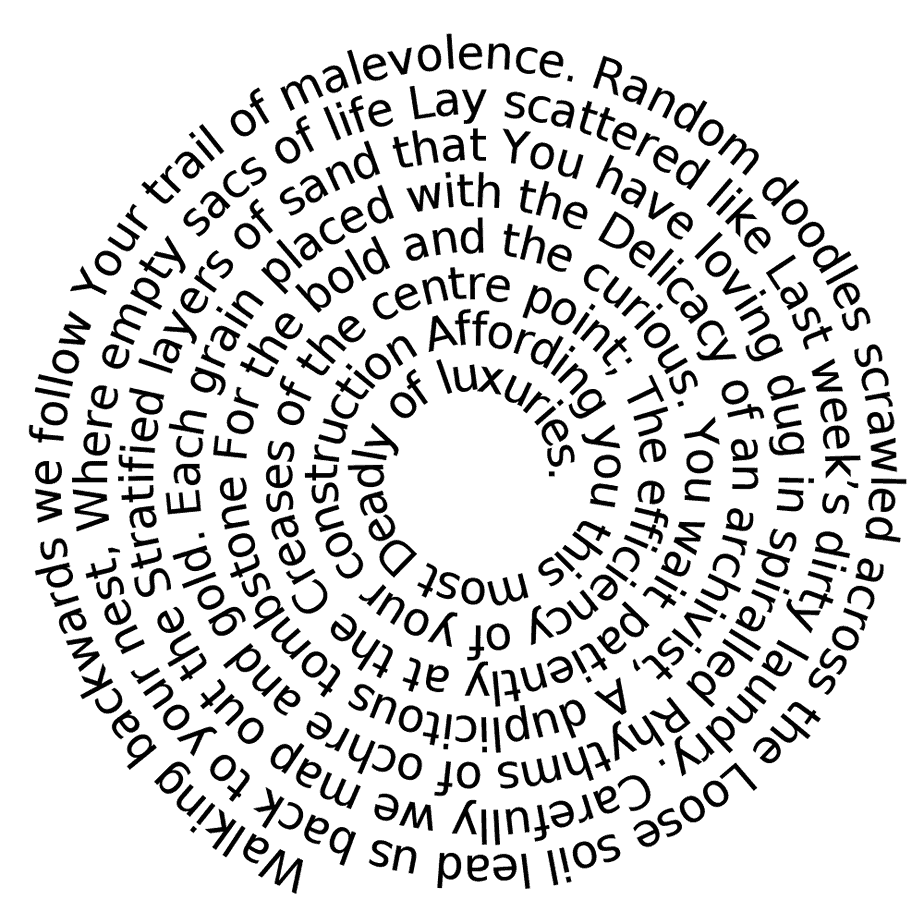Walking backwards we follow
Your trail of malevolence.
Random doodles scrawled across the
Loose soil lead us back to your nest,
Where empty sacs of life
Lay scattered like
Last week’s dirty laundry.
Carefully we map out the
Stratified layers of sand that
You have loving dug in spiralled
Rhythms of ochre and gold.
Each grain placed with the
Delicacy of an archivist,
A duplicitous tombstone
For the bold and the curious.
You wait patiently at the
Creases of the centre point;
The efficiency of your construction
Affording you this most
Deadly of luxuries.

This poem is inspired by recent research, which has found that antlions use a spiral digging technique to create deadly and effective traps.
Antlions are a group of insects that are named for the predatory nature of their larvae, which trap ants and other small insects in pits dug into the ground. The antlions dig these pits using their abdomen and mandibles and when completed they bury themselves at the bottom of the pit so that only their jaws can be seen. Any small insect (such as an ant) that wanders over the edge of the sandy pit slips to the bottom via small avalanches, and into the sickle-like jaws of the antlion, who then sucks out the contents of their victim before throwing the empty skin outside of the pit.
By modelling this pit-digging, researchers have successfully demonstrated how digging in a spiral motion saves time as it enables the antlion to eject material that is less likely to topple back into the centre. In this way, antlions can produce their pits much more quickly than if they simply dug at the pit’s centre, thereby reducing the time that they are exposed to potential predators. The manner in which antlions create their pits is also a powerful example of the role that extended phenotypes play in natural selection. Extended phenotypes can be thought of as the ability of an animal to construct architectural forms from its environment to aid in its overall fitness; for example, nests constructed by birds and dams made by beavers. In this instance the extended phenotypes are the grains of sand that the antlions use to make their nest and capture their prey.
An audio version of this poem can be heard here:
Discover more from The Poetry of Science
Subscribe to get the latest posts sent to your email.